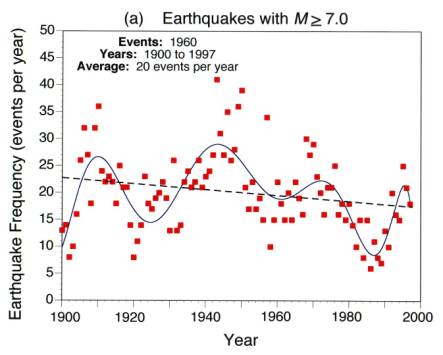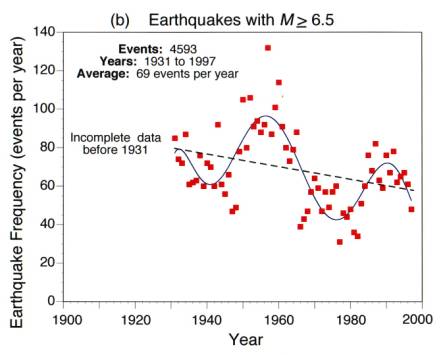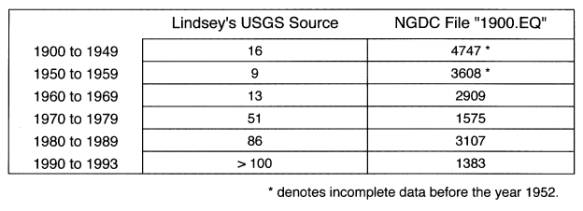EARTHQUAKES AND THE END TIMES: A GEOLOGICAL AND BIBLICAL PERSPECTIVE
Steven A. Austin and Mark L. Strauss*
Institute for Creation Research, PO Box 2667, El Cajon, CA 92021
Voice: (619) 448-0900 FAX: (619) 448-3469
(Unpublished manuscript of January 14, 1999. These authors published a simplified,
less technical version of this paper in 1999 under the title "Are Earthquakes Signs of the End Times?:
A Geological and Biblical Response to an Urban Legend,"
Christian Research Journal, vol. 21, no. 4, pp. 30-39.)
Our primary concern is with the first part of the discourse, where Jesus warns against being deceived by false christs or being alarmed at wars, rumors of wars, famines and earthquakes:
And Jesus answered and said to them, "See to it that no one misleads you. For many will come in My name, saying, 'I am the Christ,' and will mislead many. You will be hearing of wars and rumors of wars. See that you are not frightened, for those things must take place, but that is not yet the end. For nation will rise against nation, and kingdom against kingdom, and in various places there will be famines and earthquakes. But all these things are merely the beginning of birth pangs." (Matt. 24:4-8)
Among dispensationalists there are two main interpretations of these verses. As we shall see, neither confirms that earthquakes will increase as the present Church age draws to a close.
(1) Some dispensationalists see the whole of the Olivet Discourse as relating to the tribulation period. Verses 4-8 are usually said to concern the disturbances of the first half of the tribulation while verses 9-26 concern the second half - the Great Tribulation.53 Evidence for this is claimed in the similarity between the events described in verses 4-8 and those associated with the seven seals of Revelation 6.54 For advocates of this view, the earthquakes identified in verses 7-8 are not part of the present Church age, but rather the tribulation period. In this case, even if the birth image in verse 8 were to indicate an increase in earthquakes (which is not necessary - see discussion below), this increase occurs during the tribulation, not during the present Church age. Present (Church age) data concerning earthquake frequency has little or no bearing on the text.
(2) Other dispensationalists (as well as many non-dispensationalists) claim that verses 4-8 (or verses 4-14) concern not the tribulation period, but general signs which are characteristic of the present age. Lewis Sperry Chafer wrote that the events described in verses 4-8 "are the characteristics of the unforeseen intervening or intercalary age"55 - that is, the Church age. John Walvoord similarly affirms that "verses 4-14 are general prophecies that can find fulfillment throughout the present age, with verses 15-30 fulfilled in the Great Tribulation."56 He adds, however, that these former events "are repeated in the Great Tribulation when what was perhaps partially fulfilled earlier then have a very literal and devastating fulfillment."57 The primary evidence that verses 4-14 are signs characteristic of the present age are their general nature and the fact that Jesus identifies them as events which do not indicate the end ("but that is not yet the end") and so should not provoke apocalyptic fervor ("see that you are not alarmed").
[ an excerpt, see the link for complete article ... ]


Figure 1. Global frequency of the largest earthquakes during the twentieth century. Graph (a) shows the frequency of M 7.0 earthquakes during the entire century (1960 events). Graph (b) shows the frequency of M 6.5 earthquakes after 1930 (4593 events). In both plots a general decrease in earthquake frequency is evident through the twentieth century.

Table 1. Numbers of M 6.0 earthquakes worldwide in the twentieth century. The numbers of earthquakes reported in the National Geophysical Data Center file called "1900.EQ" greatly exceed those reported by Hal Lindsey from his unspecified U.S. Geological Survey source.